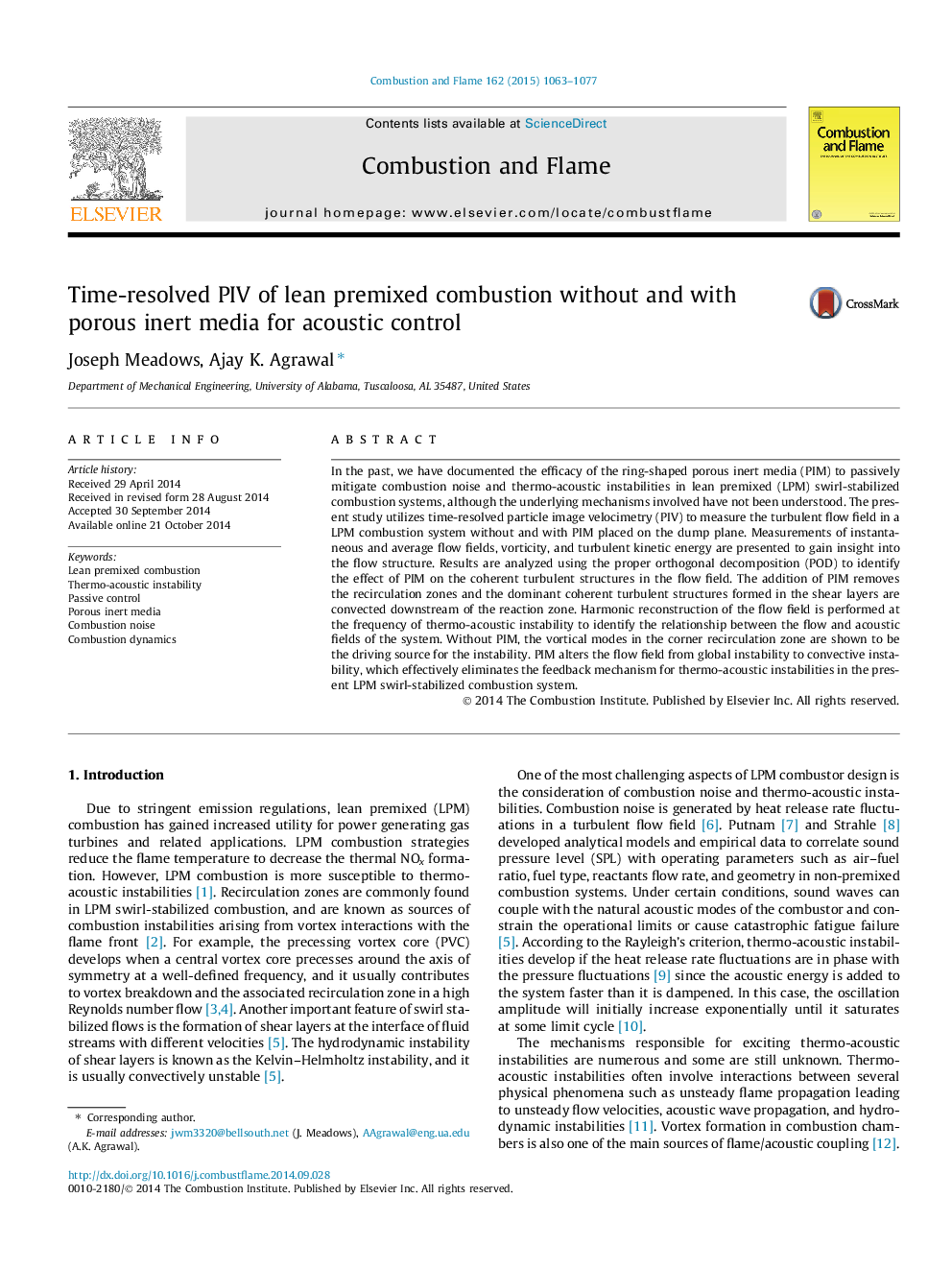| Article ID | Journal | Published Year | Pages | File Type |
|---|---|---|---|---|
| 168738 | Combustion and Flame | 2015 | 15 Pages |
In the past, we have documented the efficacy of the ring-shaped porous inert media (PIM) to passively mitigate combustion noise and thermo-acoustic instabilities in lean premixed (LPM) swirl-stabilized combustion systems, although the underlying mechanisms involved have not been understood. The present study utilizes time-resolved particle image velocimetry (PIV) to measure the turbulent flow field in a LPM combustion system without and with PIM placed on the dump plane. Measurements of instantaneous and average flow fields, vorticity, and turbulent kinetic energy are presented to gain insight into the flow structure. Results are analyzed using the proper orthogonal decomposition (POD) to identify the effect of PIM on the coherent turbulent structures in the flow field. The addition of PIM removes the recirculation zones and the dominant coherent turbulent structures formed in the shear layers are convected downstream of the reaction zone. Harmonic reconstruction of the flow field is performed at the frequency of thermo-acoustic instability to identify the relationship between the flow and acoustic fields of the system. Without PIM, the vortical modes in the corner recirculation zone are shown to be the driving source for the instability. PIM alters the flow field from global instability to convective instability, which effectively eliminates the feedback mechanism for thermo-acoustic instabilities in the present LPM swirl-stabilized combustion system.
